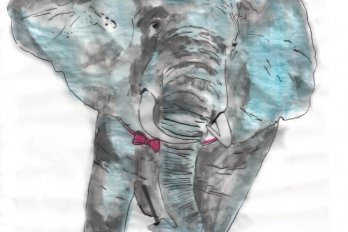catskanchanaburi — Outside of Bangkok, I am following a tight motorcade that clings to narrow blacktop roads lined with ratchaphruek trees, all bursting with seasonal, hot yellow blossoms. It is the last weekend before Buddhist Lent, and thousands of middle-class Thais are headed to resort towns like Kanchanaburi, my destination, 250 kilometres northwest of the capital. Everywhere I look, I see the sacred saffron colour: the kids selling lottery tickets wear lemony T-shirts; the road workers smile as they install newly painted yellow signs honouring Asanha Bucha Day. The manila sun smiles back, but temporarily. In a few days, a tropical deluge will turn the countryside into a pretty brown lagoon.
The Buddha of the rainy season requires a private effort at inner illumination, and Kanchanaburi is a good place for such soul-searching. It is the home of Wat Pa Luangta Bua Yannasampanno Forest Monastery, where the yellow-robed monks of the Theravada order operate a tiger refuge. Buddha himself was a tiger in a past life. In another incarnation, he fed himself to a starving family of tigers.
The warning sign at the entrance to the half-hectare game facility is explicit: “Hot Colour is Dangerous. If you wear bright colours: Red, pink or orange, you will not be able to enter the Temple grounds.” Visitors busy themselves disappearing vivid scarves and seductive sweaters. One husband is not quick enough off the mark, according to his wife’s shrill remonstrance; she snatches the red golf hat from his hand and stuffs it into her purse. I join a long line of tiger seekers that snakes down into a steep, iron red canyon. It is preternaturally silent. No growls, no rending of bones and flesh — just the random shrieks of unseen peacocks.
We file into the narrow gully, a swath of raw subcontinent overrun by the large animals, their faces like kabuki masks. They could be extras in a cult film about the end of mankind, sitting on their haunches, lolling, yawning mightily. Altogether, there are perhaps eighteen tigers in the exercise yard — some rescued from poachers, serious illness, lost habitat, and the like, some born in captivity.
Somchai Visamongkolchai, a veterinarian who works with the animals, tells me that of the seven tiger subspecies native to Southeast Asia, only five survive today. “I was, of course, a tiger in a previous life,” he says casually, as he watches me avidly for signs of something. The worry of being taken for raw meat? Our common karmic connection?
He escorts me into the dusty yard, where the big cats are basking in the afternoon sun with their young keepers. “Don’t make any sudden movements,” he repeats. “Don’t face them, and don’t turn your back on them.” The tigers are supple, as suggestive as curling smoke. The tourists kneel and stroke them reverently, the iridescent peacocks cry from the woods, water buffalo stamp their hooves. Visamongkolchai smiles proprietarily, mayor of all we fear.
One of the lithe tiger boys invites me to approach his restless charge. (I got the restless one!) Is the world opening up or closing down? The supine beast stretches from one faint edge of my vision to the other. It pants and purrs like a two-stroke motorbike in low gear as we wait to be introduced.




